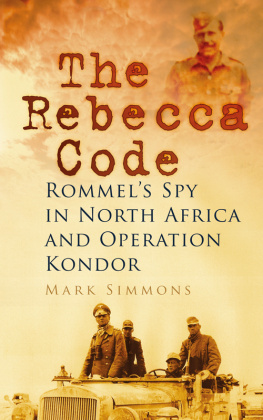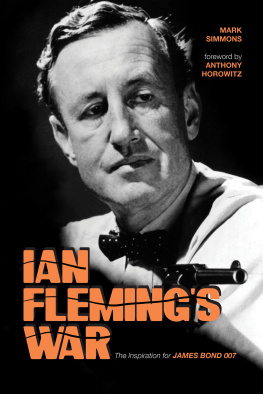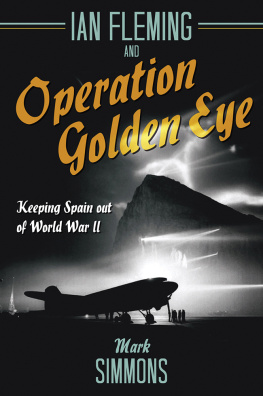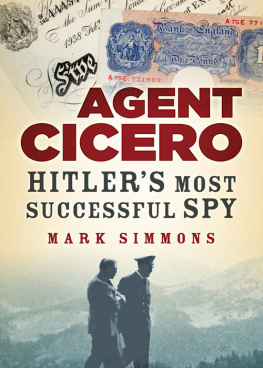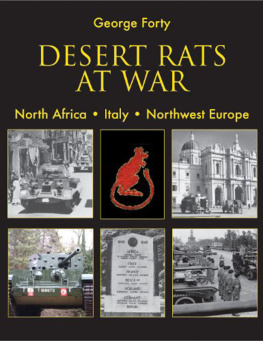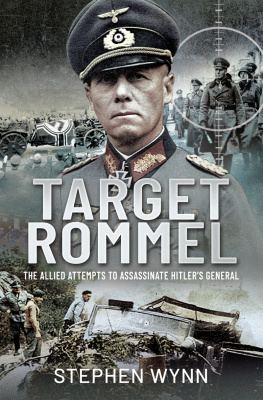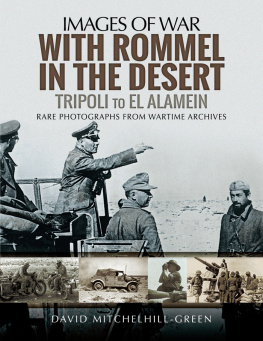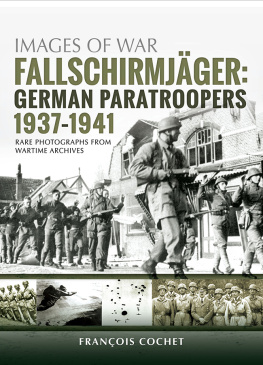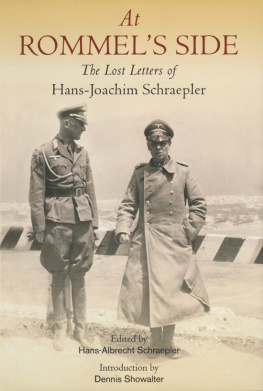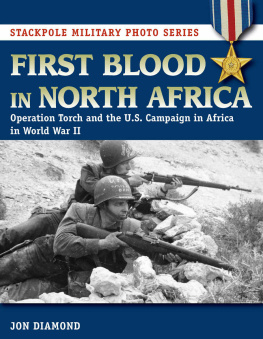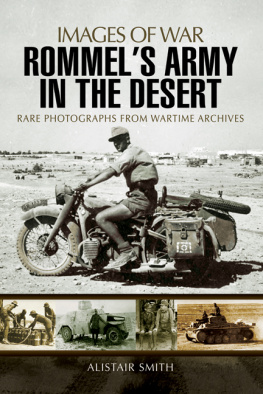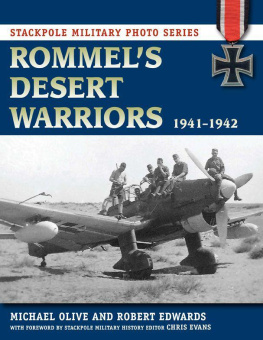
Like many people my interest in the German use of the Rebecca Code during the Abwehr Operation Kondor , began with reading Michael Ondaatjes 1992 Booker Prize winning novel The English Patient. I was further inspired by the late Anthony Minghellas 1996 Oscar winning film of the same name. Much is to be admired in both, at the heart of which is a love story between the desert explorer Count Lszl Almsy and the English woman Katherine Clifton.
Most readers I trust will be familiar with the book and/or the film of The English Patient, so there is no need to relate it here, other than to say much of the background of the Western Desert and Cairo was the setting for real events. Also the character of Almsy depicted in book and film is a marked distortion of the real man, and his end was in real life very different. Many of the other characters in the real story are discounted, no doubt for good reason in that fictional account.
The English Patient was not the first attempt in fiction to tell this story. The first book to cover the Kondor mission was by war correspondent Leonard Mosley in his 1958 publication The Cat and the Mice . Mosley was in Cairo at the time the events took place and he interviewed the German spies John Eppler and Peter Monkaster (Heinrich Gerd Sandstette) in prison. He also kept in touch with Eppler after the war. However in view of the later accounts, one written by Eppler, and later firm evidence, it is certain that Eppler strung him along to a degree in order to embellish his own image as some sort of James Bond. The 1960 film Foxhole in Cairo was based on Mosleys book, the film poster calling it the greatest spy story of the desert war. That is true, but the film has little else to recommend it. In the film James Robertson Justice plays the British intelligence officer, a naval commander, tasked with catching the spies, and Michael Caine is seen in one of his early roles as a German W/T operator.
Other writers also used the bones of the Kondor story in fiction, Ken Follett in The Key to Rebecca (1980) which was filmed in 1989, and Ken Deighton in City of Gold (1992). Both books relied heavily on personal accounts. Also Anwar Sadats Revolt on the Nile (1957), A.W. Sansoms I Spied Spies (1965) and John Epplers Rommel Ruft Cairo (1960) published in English as Operation Condor Rommels Spy (1977). It is doubtful if they would have used Almsys Rommel Senegenal Libyaban (1943), translated into English by Gabriel Francis Horchler as With Rommels Army in Libya (2001). Or for that matter come across Almsys diary of Operation Salam , held by the Imperial War Museum in the Lloyd Own Papers.
The Secret MI6 files were closed in 2003 and released to the public in 2006. It was my aim, therefore, to bring the four eyewitness accounts by Almsy, Eppler, Mosley and Sansom together with the official files and tell the true story of the Rebecca Code and Operation Kondor.
Secondary sources that have been useful include Hans-Otto Behrendt, Rommels Intelligence in the Desert Campaign (1980). John Biermans The Secret Life of Lszl Almsy (2004), Paul Carells The Foxes of the Desert (1958), Christer Jorgensens Hitlers Espionage Machine (2004) and Saul Kellys The Lost Oasis (2002).
I am grateful to the staff at Bletchley Park, the Imperial War Museum, the Intelligence Corps Museum, the Public Records Office, Royal Geographical Society, AKG Images, Hunt Library, US National Archives, Hungarian Geographic Museum, Bookends of Fowey, and the Forest Park Hotel Cyprus.
I am also hugely indebted to the following people: Shaun Barrington my Editor at The History Press for his enthusiastic support for this project right from the start. Group Captain L.E. (Robbie) Robins AEDL, another enthusiastic supporter, for free use of his extensive library, his hospitality, and for reading an early draft making many excellent comments and suggestions. My late Aunt Olive Hard for her illustrations of Egypt during the war years. To Ann Willmore, book dealer at her shop Bookends of Fowey and an expert on the work of Daphne du Maurier, who supplied a wealth of information on the publishing history of the novel Rebecca.
Finally my wife Margaret as always gave her whole hearted support in the nuts and bolts of building a book, with proof reading, index building etc. Thanks to all.
Contents
Part I |
|
|
|
|
Part II |
|
|
|
Part III |
|
|
|
|
|
Part IV |
|
|
|
|
|
|
|
|
|
|
|
|
|
Troodos Mountains, Cyprus, September 1936
It was not someone Sammy Sansom expected to come across on the descent from Mount Olympus in a small Ford saloon. A young fair-skinned woman was being sick beside the road. She was sat on a fallen pine tree, in the shade of the trees, her head between her knees unaware of the cars approach. Or not caring.
Sansom had to stop. Here was a lady in distress, a European. But more important to him it was the right action to take.
Excuse me Miss, can I help? Sansom climbed out of the car and brushed off his clothes although there was no need. He was a dapper man.
Oh dear she said looking up at him, I must look a sight. Her eyes were startlingly clear blue. She shook her dark hair away from her face. She noted the lightweight suit and knew instantly the type, a colonial been here for years. Im not a Miss, but Mrs Browning.
Are you ill Mrs Browning?
No, other than being pregnant and suffering morning sickness. Perhaps I was foolish to try to walk to Mount Olympus.
In this heat, which is deceptive in the mountains even early in the morning, maybe it was not wise. Where are you staying Mrs Browning?
The Forest Park hotel.
Yes I know it, near Platres, would you care for a ride back to the hotel? I am Alfred Sansom, but call me Sammy, insurance salesman for the Gresham Life Assurance Society from the Egypt office.
That would be kind Mr Sansom; I doubt this is going to pass quickly. It really is tiresome, something you men are lucky not to suffer. He was strikingly handsome, with the fashionable moustache that all men seemed lost without. And his eyes were dark pools, inscrutable but his smile was friendly and not condescending.
Sansom nodded and waited until Mrs Browning got up in case she felt faint. Her slim angular face was pale but she was steady on her feet, and strode with purpose to the car. She caught him by surprise with her height and speed of her walk, but he reached the passenger car door in time to open it for her.
A reader I see Mr Sansom she said, picking up the book Sansom had left on the passenger seat. My goodness she said reading the title, how strange, The Loving Spirit, one of mine.
You are Daphne Du Maurier?
Thats my maiden name. She opened the book to the page marked by a scrap of neatly folded paper and read: Chapter fourteen. For five years Joseph Coombe was an inmate of the Sudmin Asylum. What do you think Mr Sansom? Its not often I meet a reader.
I like it; it inspires me to visit Cornwall one day.
Oh do, how I wish I was there now. Mind you, she added quickly I find Cyprus invigorating away from the heat and multitudes of Alexandria, my husbands in the army there.
Next page
